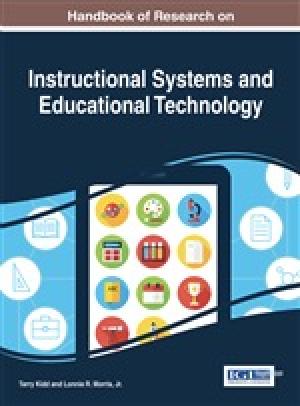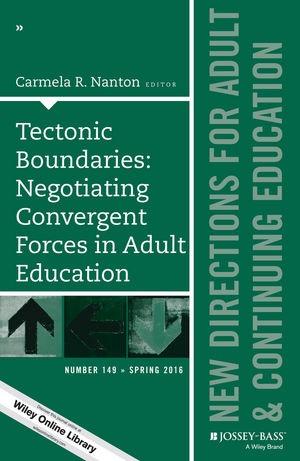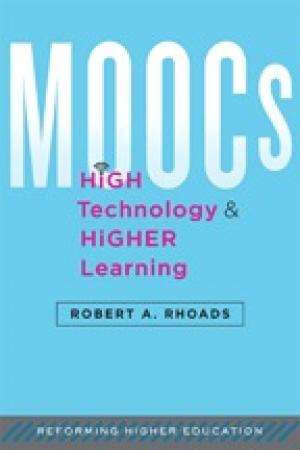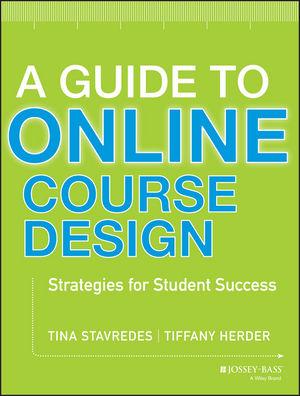Resources by Matthew Bingley

There is no shortage of scholarly research that reflects the growing importance of open education, whether referring to issues surrounding access to education (formal, informal or postformal); different copyright licencing regimes (e.g. Creative Commons); alternative forms of educational delivery such as Massive Open Online Courses (MOOCs), or alternative pathways to learning, curriculum development and delivery and/or assessing and accrediting learning. So what can another publication add to our understanding of open education? It has become clear that thinking in terms of the binaries of ‘open’ versus ‘closed’ can no longer account and do justice to the wide range of possibilities and the varying factors that destabilise some definitions and practices. In Open(ing) Education: Theory and Practice, the authors therefore map ‘open’ as emerging from a dynamic network or ecology of often mutually constitutive factors resulting in a range of possibilities. The chapters in this book provide us with glimpses of open, opening, and opened, with none of these being permanent states of affairs, but rather contingent, serendipitous, often uncertain, and fluid. This book is unique not only with regard to its variety of approaches to mapping the various possibilities between open and closed but also with regard to the global spread of its many contributing authors. (From the Publisher)

Incorporating new methods and approaches in learning environments is imperative to the development of education systems. By enhancing learning processes, education becomes more attainable at all levels. The Handbook of Research on Instructional Systems and Educational Technology is an essential reference source for the latest scholarly research on new models, trends, and data for solving instructional and learning challenges in education. Featuring extensive coverage on a wide range of topics such as distance education, online learning, and blended learning, this publication is ideally designed for academicians, practitioners, researchers, and students seeking current research on the latest improvements in instructional systems. (From the Publisher)

This slender volume presents a collection of essays examining concerns for adult education. The first chapter frames the problem with the concept of “liquid modernity,” which is the idea that structures such as family, occupation and career, and social life are fluid in an unprecedented way (12). Education and informal learning serve learners if they teach them how to navigate complex contexts and to recognize and adapt to changing circumstances. The metaphor of “tectonics” is used to describe forces which are sometimes convergent, divergent, and/or transformative in adult learner’s lives (93). This metaphor underscores the paradox that for adult learners, education needs to complement the structures of their lives while at the same time responding to the modern world’s shifting demands. Other chapters explore various contexts of adult learning. Chapter Two discusses the concerns of adults learning English as a second language. As immigrants, these learners are in transition, adjusting to new circumstances and a new culture. In order to make their education meaningful and engage them in learning, the authors describe strategies of using prompts to get students speaking and writing about their lives and their experiences to practice English, to engage students, and make their education meaningful (25). Chapter Three describes the growth of job clubs among communities of African-American women. These clubs are often attached to other institutional social networks in their lives, such as faith-based communities. These networks facilitate informal learning by providing tips and resources for members to update their skills. Chapter Four addresses education for the dissemination of health information, describing interrelated cultural, social, and economic factors that impinge on health education and which in turn impact health care outcomes. Chapter Five takes the digital native versus digital immigrant divide to examine intergenerational differences in approaching education. The challenge for educators is to design educational content which engages natives yet is also friendly and inviting for immigrants, and to shift the mode of adult education from thinking about teaching to thinking about learning. Chapter Six describes the significance of the ancient art of storytelling, not just to preserve culture, but to evoke and shape the meaning of life experiences for adult learners. Chapter Seven begins with the context of a post-recession economy in which low-skilled workers are increasingly vulnerable. This context provides the foundation for a discussion of the role of adult education: to build human capital, to make better citizens, and to enrich the course of learner lives. Chapter Eight outlines problems of delivery, credit, and accreditation that result from the tectonic shifts of the modern digital age. These shifts include such varied educational modes and attainments as badges, MOOCs, and "direct assessment competency-based programs" (87). The book’s strength rests in its ability to point to the concerns that frame contemporary adult education, although it does not describe pedagogical strategies in an equally consistent fashion. The book ends with the important reminder that in adult education, negotiation is key. Adaptability and flexibility complement the issue of fluidity. Good pedagogy meets learners where they are and recognizes their needs and concerns.

Stephen Downes, cofounder of the first Massively Open Online Course, or MOOC, once asked how many ways society actually needs to teach trigonometry (2001). Each instructor who teaches the subject must teach it anew every time. But what if there is an optimal way to teach the subject? Shouldn’t that be developed as a pedagogical artifact and made available to everyone? The MOOC promises the possibility that anyone with an internet connection can access quality instruction. Rhoads’ book, MOOCs: High Technology and Higher Learning is a critical examination of the MOOC movement. The first half of the book outlines the history of MOOCs as growing out of the Open Educational Resource movement, as well as the institutions which stepped in to take advantage of MOOCs to expand educational brands and even make open courses profitable. It also outlines the split between the Connectivist-MOOC (cMOOC), which relies on individual motivation for self-study, and the xMOOC, which represents the scalable online arm of institutions of higher education and which often offers certificates of completion. The book really shines in its critique of the current state of the MOOC movement. Rhoads argues that rather than being a democratizing force delivering free education to all, MOOCs have largely replicated inequalities in society. The MOOC movement has the ideals of democratization of education, but it has been dominated by a hegemony of elite schools such as “Columbia, Harvard, MIT, Penn, Yale, and Stanford” (104). He illustrates this problem using the example of a popular political philosophy course called “Justice” offered by Harvard’s Michael Sandel. When San Jose State University proposed offering a MOOC version of this course with Sandel delivering his lectures via video, the SJSU Philosophy Department objected. Their concern was that this created a two-tiered system in which students at elite universities interact with “rock star” (105) instructors, while students at public institutions watch canned lectures and whose work was supervised by faculty who were reduced to “glorified teaching assistants” (106). The scalability of MOOCs means that faculty may never interact with students, or at best may just serve as graders. Uncritical adoption of MOOCs also exacerbates problems of diversity in higher education, especially when one recognizes that the institutions creating MOOCs are less diverse than the presumptive adopting institutions. And finally, there is a false epistemological assumption that there is one right, best way to teach a subject, rather than allowing that there may be many different ways to teach a subject, each responsive to a particular social and cultural context. Rhoads’ goal is not to suggest that higher education should abandon MOOCs entirely. He is aware of the potential in MOOCs for making quality education more broadly available. But he recommends a number of reforms in the way MOOCs are developed and implemented. Digital online learning may benefit from a combination of recorded lectures and publicly accessible online documents as well as intensive faculty support embedded within particular institutional contexts. This approach to MOOCs yields a hybrid model he dubs an “xsMOOC,” a “MOOC with extra support” (130). Contrary to the view that online learning should be pedagogically efficient, Rhoads argues that the best educational resource is one that is grounded in the context of the learners who will use it. In this way can MOOCs best fulfill their promise.

The first online course I ever viewed appeared to be a simple transfer of teaching materials from the in-person format to the online environment. There were scans of handwritten lecture notes, a few documentary links, and a couple of ungraded discussion forums. This haphazard planning was a reminder that the virtual classroom is a distinctly different environment from the traditional classroom and must be planned for and constructed in a very different way. This is where Stavredes and Herder’s An Online Guide to Course Design would have been useful, to navigate the opportunities an online course affords and to mitigate the problems of student retention and persistence sometimes seen with distance education. Stavredes and Herder advocate an outcomes-based design in order to plan an online course fully before it even begins. One starts by first asking what students should learn from the course, then asking how to assess what they have learned, and finally asking how they will learn this content. To this end the authors break course creation down into a four-part arc of (1) Analysis, (2) Design, (3) Development, and (4) Implementation and Evaluation. In the first step, “Analysis,” the instructor assesses the characteristics of the expected learners and articulates his or her goals for the course. The authors invoke Bloom’s Taxonomy to structure the goals of the course and they use this framework again in choosing course activities. The second phase, “Design,” takes up the bulk of the book. The authors helpfully recommend strategies for choosing and sequencing course activities. Of particular note is the role of the asynchronous classroom discussion, as discussions are one of the ways an instructor creates a social presence in the virtual classroom. Here we see that the online environment is fundamentally different from the face-to-face classroom. “If learners don’t feel a connection with you and their peers, it is difficult for them to persist online” (80). An instructor must deliberately foster a social presence to engage students in the online classroom. The authors recommend a problem-based approach to content-related discussions: present students with a real-world issue and let them draw inferences from the subject matter to solve the problem. In the “Development” phase the authors describe further how lecture notes, videos, and introductions can help enhance the sense of the online classroom as a social and collaborative community. The authors also offer advice for developing rubrics and how to write instructions for students accustomed to scanning information on the Internet rather than actively reading it. Finally, in the “Implementation and Evaluation” phase the authors recommend reflecting on the course to improve it according to specific standards. The authors develop a rubric for evaluating a course and they recommend eliciting feedback from students as well as from colleagues after each term, to discover areas for improvement. A real strength of this book is that the authors do not just explain what makes for good course design. They give examples of how to design well with a high degree of precision. For example, they offer clear guidelines for articulating course outcomes. In chapter 10 there is a chart quantifying the amount of time different activities in a course take, from assigned reading, to writing, to taking quizzes, in order to meet accreditation expectations. It is this concern with ensuring that all aspects of course design are planned and deliberate that makes this book an asset to anyone serious about developing an effective online course.